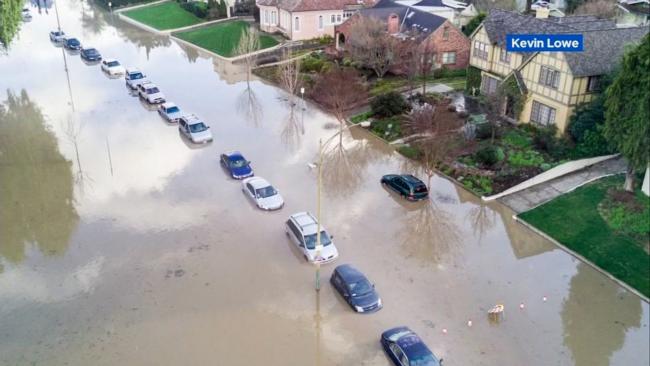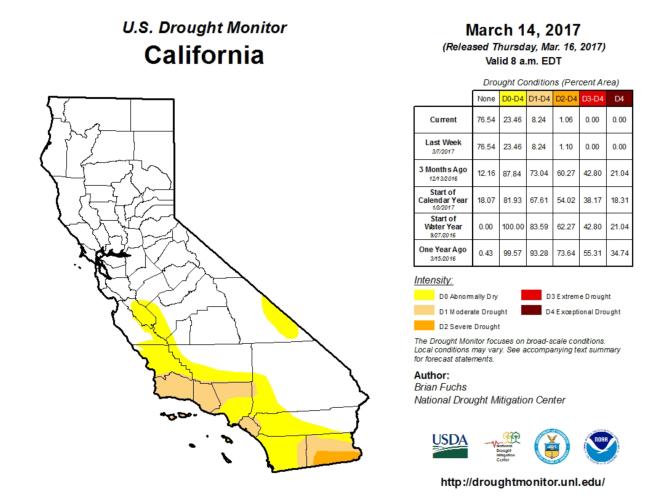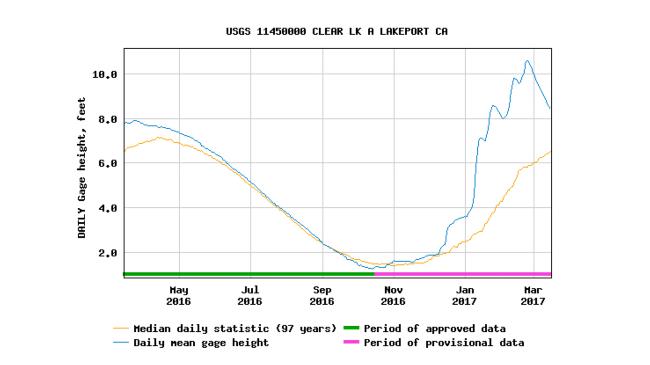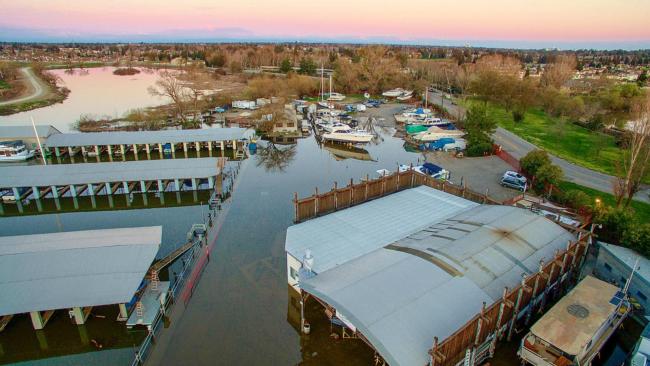Wet Winter to Impact California Tournaments
From drought conditions to floods, the effect of recent weather will be felt by Costa FLW Series Western Division anglers this year
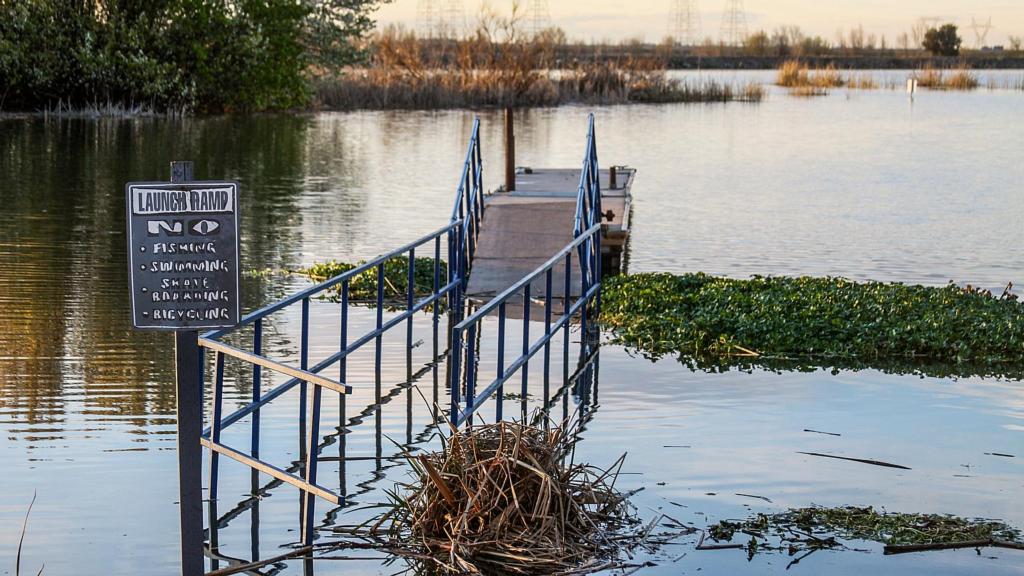
Dam spillway failures, levee breaches, sinkholes, roadway collapses, flooding, evacuations – the recent weather headlines from California read like a post-apocalyptic novel. But in this case it’s not fiction, but simply the aftermath of California’s 2017 winter.
The “weather bomb,” as it was recently called, exploded over the Golden State and was touted as the biggest storm to batter the West in years – if not decades. Meteorologist Ryan Maue reported 10 trillion gallons of rain would drench California within one week – an incomprehensible amount of water.
For California residents, the effects ranged from the inconvenience of power outages, residential displacement and school, workplace and road closures, to tragedy and trauma. For the state of California itself, however, the winter storms brought torrential rainfall that the drought-stricken region was (and remains) in desperate need of.
But the million-dollar question remains – is the California drought really over?
In the end, it depends on who you ask.
The U.S. Drought Monitor website says not yet. Although much of the state has been removed from the drought map, as of early March parts of southern California are still in either moderate or severe drought.
The California Department of Fish and Wildlife has not yet released an official statement on the drought, however, CDFW Senior Environmental Scientist Kyle Murphy feels the increased rainfall has been a blessing to California’s fisheries.
“It has filled most of our reservoirs and provided additional habitat that we haven’t seen in at least five years,” he says. “This translates into increased nutrients for the entire ecosystem.”
Murphy anticipates the increased water will provide an abundance of fish throughout the state’s lakes, rivers and reservoirs in the future.
“This will improve the potential of successful spawning and rearing conditions for juvenile bass,” he adds. “With more flooded brush and grasses, the fish will be able to spread out into the newly available rearing habitat versus congregating in limited areas.”
High water helping to improve future spawning and recruitment success is music to the ears of bass anglers, but what do high water levels mean right now for those ready to dive into the Costa FLW Series stops on the tidal waters of the California Delta and the famed big-bass fishery of Clear Lake?
Clear Lake should return to normal
Clear Lake is measured on the Rumsey Gauge. The Rumsey Gauge puts zero Rumsey at the natural low water level of Clear Lake – 1,318.256 feet above mean sea level (AMSL). A full lake is 7.56 feet, or 1,325.816 AMSL.
At its highest point last month, Clear Lake topped out at over 10 Rumsey, causing flooding of residences, launch ramps and other structures around the lake. It was closed for two weeks to motorized boats and reopened on Feb. 28. The water has receded to about 8.4 Rumsey (as of March 15). A speed restriction of 5 mph within a quarter-mile of the shoreline will remain in effect until the level falls below 8 Rumsey.
By the time the Costa FLW Series Clear Lake event blasts off Sept. 28, the impact of the current high-water situation is predicted to be minimal.
“The water will go down a lot by fall,” says big-bass expert Paul Bailey.
A lake local, Bailey has caught more than 40 double-digit bass on Clear Lake and is well-versed in the peaks and valleys of the lake’s water levels.
“The good thing about the high water now is we won’t have the drastic low water levels later in the fall like we’ve seen a few times in past years,” he says. “This water is going to be really good for the lake – good for fall fishing.”
A “new” Cal Delta
Because of high water levels much of the south Delta is currently closed, and the central Delta is on a 5-mph restriction two hours pre-and-post high tide. There’s a roughly two-month gap separating the current conditions and the launch of the Costa FLW Series Delta event on May 11, and it appears winter’s impact won’t have completely subsided for the Delta anglers.
“It will definitely look different than last year,” says Bobby Barrack, one of the Delta region’s best-known pros. “The storms are going to change the river on the bottom and the top – meaning from the bottom composition to the shelter, structure and canopies on the surface.”
Barrack, who’s notched 18 top-10 FLW finishes on the Delta over the past 21 years, including two victories, broke down the impact of wind direction and velocity on the Delta.
“For the most part, the first storms were coming out of the north – the El Niño storms,” says Barrack. “But then they were southerly and southeasterly, which is the Pineapple Express program. These are the storms that bring a tremendous amount of moisture. These are the storms where we lose houses off the hillside of Santa Cruz and San Jose is getting murdered with water flowing through the street.”
Barrack says north, northwest and west are the predominant wind directions on the Delta, so there are a lot of east-facing banks that get debris blown into them.
“From January to March, those Pineapple Express storms came with 20- to 40-mph winds that hit all of those easterly and northeasterly banks,” explains Barrack. “There had been years of debris and vegetation piled in there, and now it’s been blow free and clear. Those areas that were stuffed with hyacinth and heavy, dense vegetation have been swept out like a parking lot when a store closes and the guy hits it with a big industrial leaf blower.”
Barrack says these “cleanly swept” areas will create new spawning ground and habitat for the fish.
Water temps are another factor that Barrack feels will be impacted well into the fishing season due to an increase in snowmelt. The northern part of the Delta, in particular, he expects to remain cooler than the central and southern areas.
“In the extreme northern areas, we will have cooler water all the way through the first part of July,” he predicts. “That will retard some of the spawn. Not all, but definitely some.”
Barrack expects water clarity will be impacted in many parts of the Delta, while the Mildred and Frank’s areas remain consistent.
“That central area tends to have the most stable water quality and vegetation during the time of the FLW event [mid-May], and I don’t anticipate that to change,” he says. “The more vegetation we have, the clearer the water will be, and the less vegetation, the dirtier the water will be. Where there is less vegetation and dirtier water, the fish will relate to hard structure.”
On the Delta, Barrack will choose down baits or reaction lures depending on the salinity of his target area.
“With the years of drought and all the water that is being pumped out of the Delta, there has been a substantial amount of salt intrusion,” says Barrack. “We’ve had more salt, more brackish water, a higher salinity content in the Delta over the last three years – especially over the last two years – than I’ve experienced anytime in the ’80s, the ’90s or after. During low-water years – with the increased salt intrusion – the more I have to go with bottom-contact baits. The fresher the water, the looser the fish will get, and the better the reaction bite is.”
Barrack doesn’t forecast a significant change in winning weights or big-bass contenders.
“You don’t see the benefits of more or bigger fish from a lot of water within the same year. It doesn’t just start raining bass; but the more water that you get, the better it is for the different species, and the more they can prosper. It is about the sustainability of the fishery. If you have one extremely wet winter, it can do only so much good, but multiple wet winters – now, that would be great for our fishery.”
